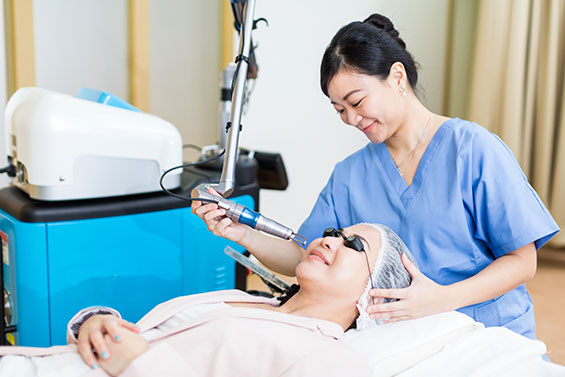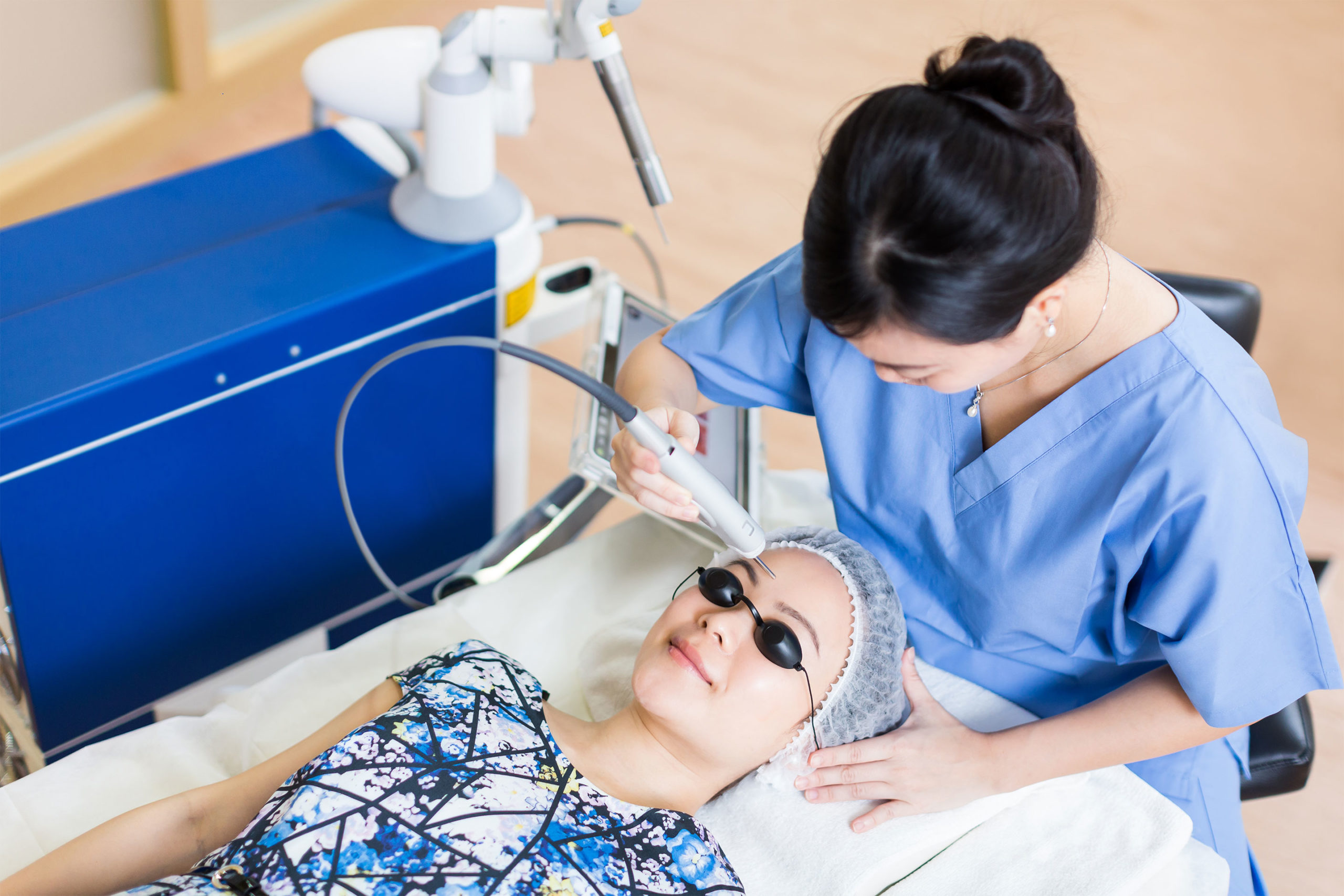First, let’s talk about lasers.
Lasers are sources of high-intensity light, which can be used by skin care professionals to accurately target small spots with high energy. A laser facial is a treatment that elevates the basic facial, providing a safe and effective means of stimulating collagen and evening out skin tone.
Laser Facials Can Help With These Skin Conditions:
- Unwanted facial hair
- Droopy, dry, sagging eyelid skin and dark circles
- Acne scars
- Aging skin problems, such as age spots, fine lines, and wrinkles on the face
- Pucker marks and frown lines
- Brown spots and uneven skin color
- Scars
- Uneven skin tone and texture/ Pigmentation
- Smokers’ line
- Vascular lesions
- Skin tightening
As technology advances, many other skin problems and diseases can now be treated using laser therapy.
- Rosacea.
- Keloidasis
- Seborrheic keratosis
- Lentigines
- Vitiligo.
- Hives.
- Seborrheic dermatitis.
- Eczema.
There are two basic types of lasers used for cosmetic purposes: ablative and non-ablative.
Ablative vs. Non-ablative Lasers
Ablative lasers vaporize the top layers of damaged skin, while non-ablative lasers work deeper in the skin without removing or otherwise damaging the top layers. For this reason, there is no downtime associated with cosmetic procedures like ours, which use non-ablative laser technology.
Ablative Lasers:
In this procedure, an intense wavelength of light is targeted at the skin, which removes the outer layers of aged or damaged skin. Laser stimulates the underlying skin, resulting in collagen formation and reduced wrinkles; once the skin heals after the treatment, new smoother, tighter skin forms. Ablative lasers are of two types:
Carbon Dioxide Laser (Co2):
It was first introduced during the late ’60s and is still being used for skin rejuvenation. Due to its side effects have mostly been replaced with fractional mode lasers, which have fewer side effects and heals faster. It is not applicable for darker skin tones.
Erbium Yttrium-Aluminum-Garnet (Er:YAG):
It helps remove surface-level and moderately deep lines and wrinkles with minimal burning of surrounding tissues. It has lesser side effects and heals faster than CO2 Laser treatment.

Non-Ablative Laser
Non-ablative lasers work beneath the surface skin layer. They stimulate collagen growth and tighten the underlying skin to improve the skin tone. It also removes fine lines and mild to moderate skin damage. With continuous treatments, it helps with deep lines too.
Non-Ablative Laser-based treatments are of the following types:
Pulsed Dye Laser
PDL treats the skin by directly targeting the blood vessels to shrink them, making the skin less red. The time taken for healing is only a few hours, during which time the pinkness and the redness subsides.
Nd: Yag Laser
Neodymium-doped Yttrium Aluminum Garnet is a crystal that is used as a laser medium for solid-state lasers. These emit a wavelength of high energy light, which creates heat and destroys the diseased cells focused on a particular skin condition.
Alexandrite Laser
This laser emits a wavelength of high energy light converted to heat energy in order to attack a focused area. This laser uses the process of photothermolysis, which means using light (photo) to heat (thermo) a selected area for destruction (lysis). Alexandrite lasers cause exact tissue destruction of the lesion and leave tissue in the surrounding area undamaged.
Light-Based Treatments
Light-based treatments are also used to cure skin problems. However, they are not exactly laser treatments but are similar to it in terms of purpose, procedures and results.
Ablative laser and light-based treatments can result in infections, cold sores, milia (small white elevated cysts of superficial skin), darkening of the skin or cysts.
Non-ablative techniques can cause temporary hyperpigmentation, blisters, and damage to the eyes from laser exposure (that’s why Quiklaser protect you with goggles).
There are new types of lasers being introduced for various skin problems and skin types with advancing technology. With so many different types of laser skin treatments available, it is vital to choose an experienced team advised by dermatologists with an effective treatment plan tailor-made for you. Contact our experienced professionals now to see which of our innovative treatments will work best to resolve your skin issues.

